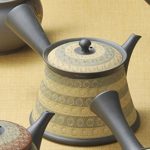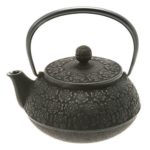Kutani ceramic kyusu with Cihbu (dot) pattern
Blue dots and flowers (350ml)
When you look for a flowery and colorful Japanese traditional pottery, I recommend three kilns, Arita (Imari) ware, Kiyomizu (Kyoto) ware, and Kutani ware. There are some styles of the old kiln, and they have each brightness. The blue, white or pink dot patterns really go well with gold as well as flowers. All of dot and pattern are drawn by the craftsmen. You would feel admiration for the fine work.
Blue dots (300ml)
Pink dots (300ml)
A production district of Kutani ware is in Ishikawa Prefecture where Kaga Domain ruled in Edo Period (1603-1868). That was the most well off domain in Japan beside Tokugawa Shogunate. People at the time praised the domain as “Kaga, a million goku (the amount of rice that could be harvested in a domain). Using the wealth, the lords of Kaga Domain had encouraged the people to cultivate a culture. They introduced the culture of Kyoto and developed it. In consequence, the flowery and delicate art was born in Hokuriku Area. They created crafts with gold, a symbol of the wealth, in plenty.
Blue dots (350ml)
Princess Feeling a Feudal Lord Of Kaga (350ml)
250 years after the beginning of Kutani ware, a great craftsman invented a new pattern for the pottery in 1912. Mizuta Seizan (1873-1921) created the way to put blue dots on a pottery one by one. That is Aochibu (blue dots pattern). Furthermore, he also invented the pattern filled with flowers next year. As you see, the kyusu teapots that I introduce are exactly the styles of Seizan.
A Princess Feeling A Feudal Lord Of Kaga (260ml)
Blue dots and flowers (260ml)
Why don’t check also beautiful black Tokoname kyusu teapots?
Related Posts
Related posts:
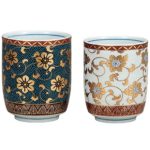 Traditional Japanese tea cups of Kutani pottery and porcelain
Traditional Japanese tea cups of Kutani pottery and porcelain
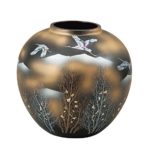 Kutani ware vase at Amazon. Perfect for Ikebana and gift
Kutani ware vase at Amazon. Perfect for Ikebana and gift
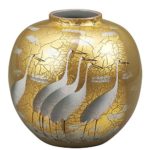 Outstanding gold Kutani pottery vases on Amazon
Outstanding gold Kutani pottery vases on Amazon
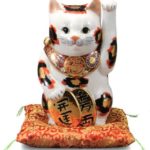 Japanese lucky cat figures of Kutani porcelain
Japanese lucky cat figures of Kutani porcelain
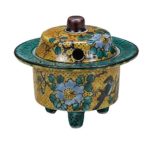 Japanese Kutani Yoshidaya porcelain Koro from Amazon.com
Japanese Kutani Yoshidaya porcelain Koro from Amazon.com
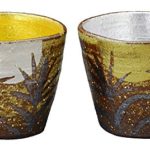 Ceramic sake cup sets from 4 Japanese traditional crafts
Ceramic sake cup sets from 4 Japanese traditional crafts








